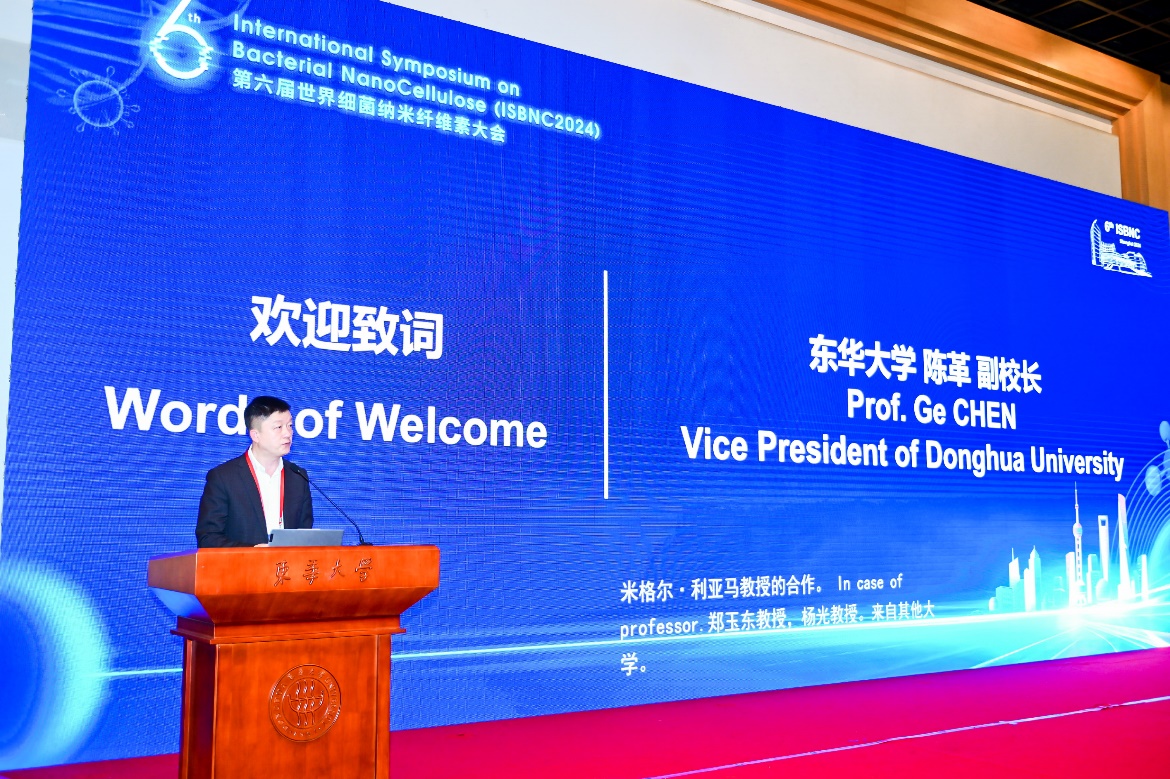From October 25 to 27, 2024, the 6th International Symposium on Bacterial Nanocellulose (6th ISBNC2024) was held at the Songjiang Campus of Donghua University (DHU). Hosted by DHU, the conference was co-hosted by East China Jiaotong University, University of Science and Technology Beijing, and Huazhong University of Science and Technology, and organized by the State Key Laboratory for Modification of Chemical Fibers and Polymer Materials (SKLFPM), Shanghai Society of Biotechnology, and the College of Biological Science and Medical Engineering, DHU.

(Speech by Chen Ge)
The DHU community has been working actively in the field of bacterial nanocellulose. With in-depth research into the biosynthesis, modification, and functional applications of nanocellulose, its teams have provided strong technical support for the innovative development of related industries. As a valuable platform for academic exchanges, this Symposium offers an opportunity to foster cooperation and could contribute to the global development of bacterial nanocellulose science and technology.
At the opening ceremony, Zhu Meifang, CAS (Chinese Academy of Sciences) Memberand director of the SKLFPM, introduced the history and achievements of the State Key Laboratory. Liu Xuanyong, dean of the College of Biological Science and Medical Engineering, DHU, shared the evolution and research experiences of the college. Professor Miguel Gama from the University of Minho in Portugal presented an overview of the Symposium and the far-reaching impacts of past conferences. Professor Hong Feng, head of The Research Base for Bacterial Nanocellulose Manufacturing and Composite Technology at DHU and scientist in synthetic biology and biomaterials, presided over the opening ceremony.

(At the conference)
During the three-day conference, 11 experts and scholars delivered keynote speeches, sharing the latest research findings and trends in the field of bacterial nanocellulose.

(Certificates were awarded to Excellent Poster Winners)
The conference was structured into eight sections, featuring 24 invited lectures, 22 oral presentations, and 37 poster exhibitions, attracting the highest number of participants in its history. It focused on cutting-edge topics, including the biosynthesis, fermentation, industrial production and modification of bacterial nanocellulose, functional composites with performance characterization, biomedical applications, environmental and energy applications, and product development and applications. It served as a platform for researchers to share the latest research results and application prospects of bacterial nanocellulose in biomedicine, food, cosmetics, functional materials, textiles, and other sectors. Also, it injected strong momentum into technological innovations and industrial development in this area.